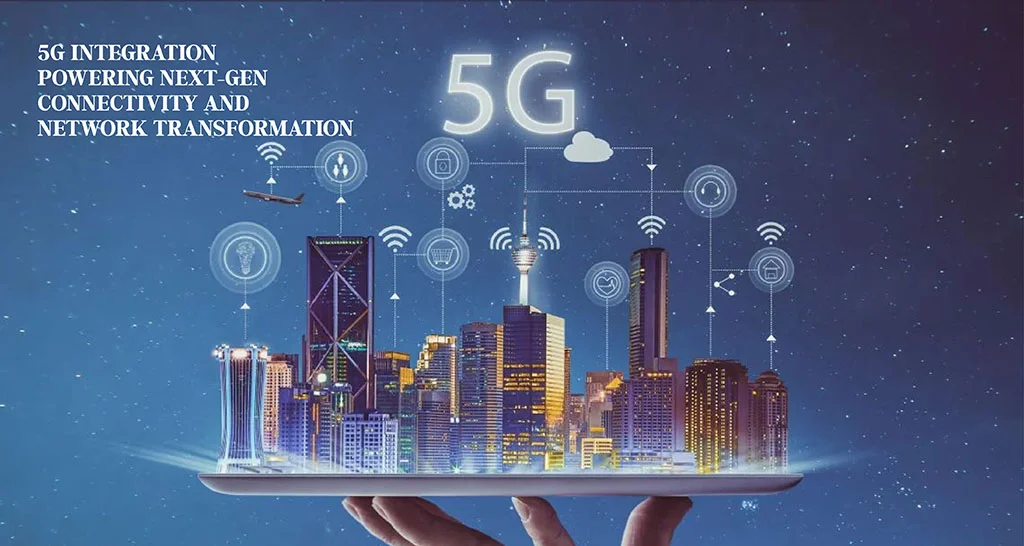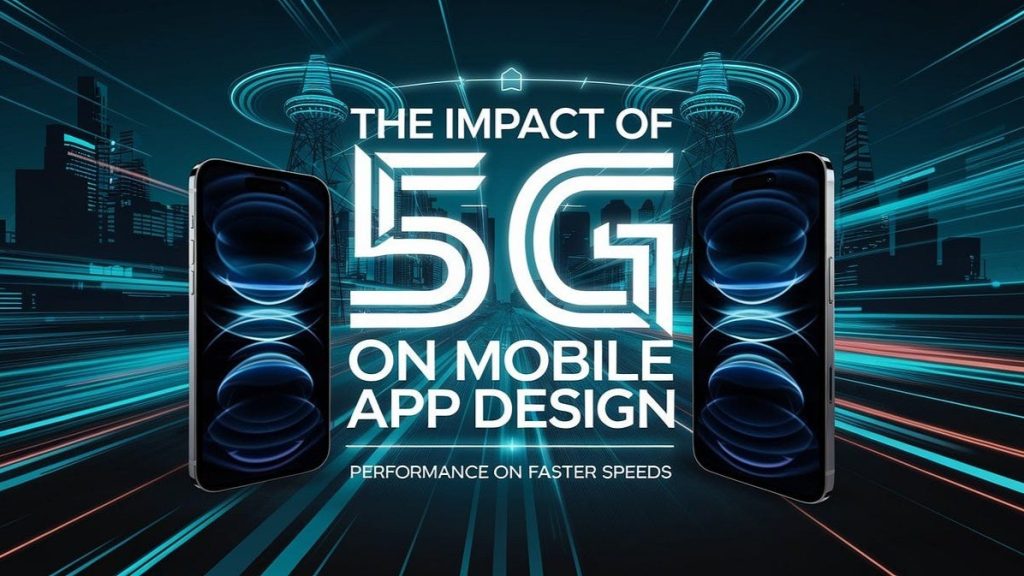Introduction
The rollout of 5G technology is more than just a speed upgrade—it’s a paradigm shift in how mobile apps are designed, developed, and experienced. With ultra-fast data transfer, low latency, and massive device connectivity, 5G is unlocking new possibilities for mobile app performance and user experience (UX) that were previously unimaginable. Let’s see 5G Is Reshaping Mobile App.
In this blog, we’ll explore how 5G is transforming mobile app development, the technical advantages it brings, the UX innovations it enables, and what developers and designers need to know to stay ahead in a 5G-powered world.
What Is 5G and Why It Matters for Mobile Apps
5G is the fifth generation of mobile network technology, offering:
- Speeds up to 100x faster than 4G
- Latency as low as 1 millisecond
- Support for 1 million devices per square kilometer
- Enhanced reliability and bandwidth
These capabilities make 5G a game-changer for mobile apps, especially those requiring real-time data, high-resolution media, or complex interactions.
Key Technical Advantages of 5G for Mobile Apps
⚡ Ultra-Fast Speeds
Apps can load and stream content almost instantly, reducing wait times and improving responsiveness.
🧠 Low Latency
Real-time interactions—like gaming, video calls, and AR—become smoother and more immersive.
🌐 Massive Connectivity
Supports IoT ecosystems, enabling apps to interact with multiple devices simultaneously.
📶 Network Slicing
Apps can be assigned dedicated network resources, ensuring consistent performance even in crowded environments.
🔋 Energy Efficiency
Devices can transmit data faster and sleep longer, improving battery life for mobile apps.

Impact on Mobile App Performance
🚀 Faster Load Times
Apps can fetch data, images, and videos in milliseconds, reducing bounce rates and improving retention.
🎮 Real-Time Gaming
Multiplayer games can offer lag-free experiences with synchronized gameplay and instant feedback.
📹 High-Quality Streaming
Apps can stream 4K and even 8K video without buffering, enhancing media consumption.
🧠 AI and ML Integration
Apps can process data in real time, enabling smarter recommendations, personalization, and automation.
🧩 Cloud-Powered Apps
With faster connectivity, apps can offload processing to the cloud, reducing device load and enabling lightweight clients.
UX Innovations Enabled by 5G
🕶️ Augmented Reality (AR) and Virtual Reality (VR)
5G enables seamless AR/VR experiences with real-time rendering and interaction, transforming education, retail, and entertainment apps.
🗣️ Voice and Gesture Interfaces
Low latency improves responsiveness of voice assistants and gesture-based controls.
🧘 Adaptive UX
Apps can adjust content and layout dynamically based on real-time user behavior and context.
🧠 Emotionally Aware Interfaces
Real-time sentiment analysis and biometric feedback become feasible, enabling empathetic UX.
🧳 Location-Based Services
Apps can deliver hyper-local content and services with precise geolocation and instant updates.

Industries Benefiting from 5G-Enhanced Mobile UX
🛍️ Retail
- AR try-ons
- Real-time inventory updates
- Personalized shopping experiences
🏥 Healthcare
- Telemedicine with HD video
- Remote monitoring via IoT
- AI-powered diagnostics
🎓 Education
- Interactive virtual classrooms
- Real-time collaboration tools
- Immersive learning environments
🧠 Gaming
- Cloud gaming platforms
- Multiplayer synchronization
- VR/AR gameplay
🚗 Automotive
- Connected car apps
- Real-time navigation and diagnostics
- Vehicle-to-everything (V2X) communication
Design Principles for 5G-Optimized Mobile UX
1. Speed-Centric Design
Design for instant feedback—eliminate loading screens and delays.
2. Real-Time Interaction
Enable live collaboration, streaming, and updates.
3. Minimalist Interfaces
With faster data, reduce clutter and focus on core interactions.
4. Context-Aware UX
Use real-time data to personalize content and layout dynamically.
5. Cross-Device Continuity
Design for seamless transitions between mobile, wearables, and IoT devices.

Challenges and Considerations
⚠️ Device Compatibility
Not all users have 5G-enabled devices—design for graceful degradation.
⚠️ Data Privacy
Real-time data collection raises privacy concerns—ensure transparency and consent.
⚠️ Battery Drain
High-speed data can increase power consumption—optimize background processes.
⚠️ Network Variability
5G coverage is still expanding—design for fallback to 4G or offline modes.
Tools and Technologies for 5G App Development
- Edge Computing Platforms – AWS Wavelength, Azure Edge Zones
- AR/VR SDKs – ARKit, ARCore, Unity, Unreal Engine
- Real-Time APIs – WebRTC, Socket.IO, Firebase Realtime Database
- Cloud Gaming Engines – Stadia SDK, NVIDIA GeForce Now
- IoT Frameworks – MQTT, Azure IoT Hub, Google Cloud IoT
Future Trends in 5G Mobile UX
1. Ambient Apps
Apps that work silently in the background, responding to context and environment.
2. Spatial Interfaces
AR/VR interfaces that interact with physical space in real time.
3. AI-Driven Personalization
Hyper-personalized UX based on real-time behavior and preferences.
4. Decentralized Apps
Blockchain-powered apps with real-time peer-to-peer interactions.
5. Zero UI
Interfaces that rely on voice, gesture, and presence rather than screens.
Conclusion
5G is not just a network upgrade—it’s a catalyst for innovation in mobile app performance and UX. By enabling real-time responsiveness, immersive experiences, and intelligent interactions, 5G empowers developers and designers to rethink what’s possible.
As 5G adoption grows, the most successful apps will be those that embrace its potential—delivering experiences that are faster, smarter, and more human-centric than ever before.





